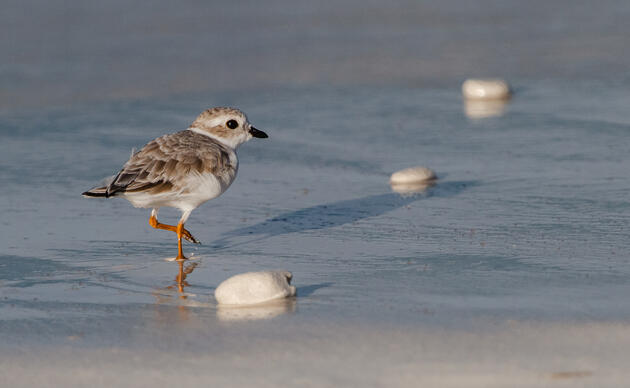Tallgrass Prairie Conservation
Tallgrass prairie does not maintain itself, partly because the bison and lightening-caused wildfires are gone, and dozens of exotic plant species are now present. Habitat management at Spring Creek Prairie Audubon Center and Rowe Sanctuary takes many forms and many people. It is an ongoing process that will never be “done,” though with each step a more naturally functioning and aesthetically pleasing landscape will emerge.
Prescribed prairie burns are scheduled mainly in the early spring to suppress the growth of invasive brome grass. Targeted areas can be a large as several hundred acres in size, and must be accomplished in a narrow window of optimum weather: low to moderate steady winds (under 15 mph is best) blowing in the right direction, with humidity levels not too low. Much planning is done to ensure the fire stays within the boundaries prescribed (local fire departments must give their approval), and many people with proper fire protection clothing and equipment are needed to keep everyone safe.
Fall and winter are the seasons that habitat management shifts to tree cutting because more time is available, the weather is cooler, and birds are no longer nesting. Trees that are not removed from prairies will eventually grow so large that they will shade out the native plants below. Nearby woods are often thinned of invasive species such as eastern redcedar, honey locust, and elm.
How you can help, right now
Support Rowe Sanctuary
Help us continue our important work for Sandhill Cranes and other birds that rely on the Platte River ecosystem!
Support Spring Creek Prairie
We are able to provide and protect this amazing landscape only with the help of private donations. Help us keep the trails open and the prairie thriving!
Support Audubon in the Great Plains
Support our work with local landowners, urban woods and prairies, and education programs in Nebraska and the Dakotas!




